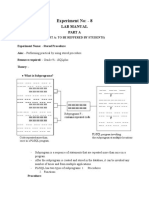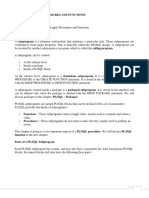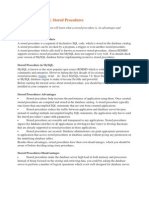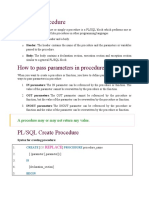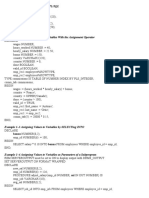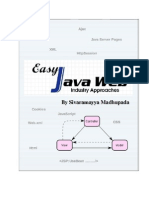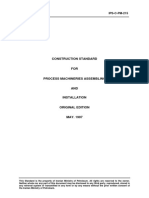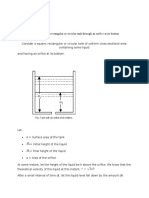0% found this document useful (0 votes)
245 views15 pagesStored Procedures
This document discusses stored procedures in PL/SQL. It defines a stored procedure as a type of subprogram that can be stored in a database for repeated execution, providing reusability and a programming environment. It provides the structure for creating procedures, including parameter lists, and examples of creating procedures with different parameter modes. It also demonstrates how to call a stored procedure and remove one. Stored procedures allow reusable code blocks to be stored in a database for repeated execution from functions, triggers, and select statements.
Uploaded by
Surya VivekCopyright
© © All Rights Reserved
We take content rights seriously. If you suspect this is your content, claim it here.
Available Formats
Download as PPT, PDF, TXT or read online on Scribd
0% found this document useful (0 votes)
245 views15 pagesStored Procedures
This document discusses stored procedures in PL/SQL. It defines a stored procedure as a type of subprogram that can be stored in a database for repeated execution, providing reusability and a programming environment. It provides the structure for creating procedures, including parameter lists, and examples of creating procedures with different parameter modes. It also demonstrates how to call a stored procedure and remove one. Stored procedures allow reusable code blocks to be stored in a database for repeated execution from functions, triggers, and select statements.
Uploaded by
Surya VivekCopyright
© © All Rights Reserved
We take content rights seriously. If you suspect this is your content, claim it here.
Available Formats
Download as PPT, PDF, TXT or read online on Scribd
/ 15












